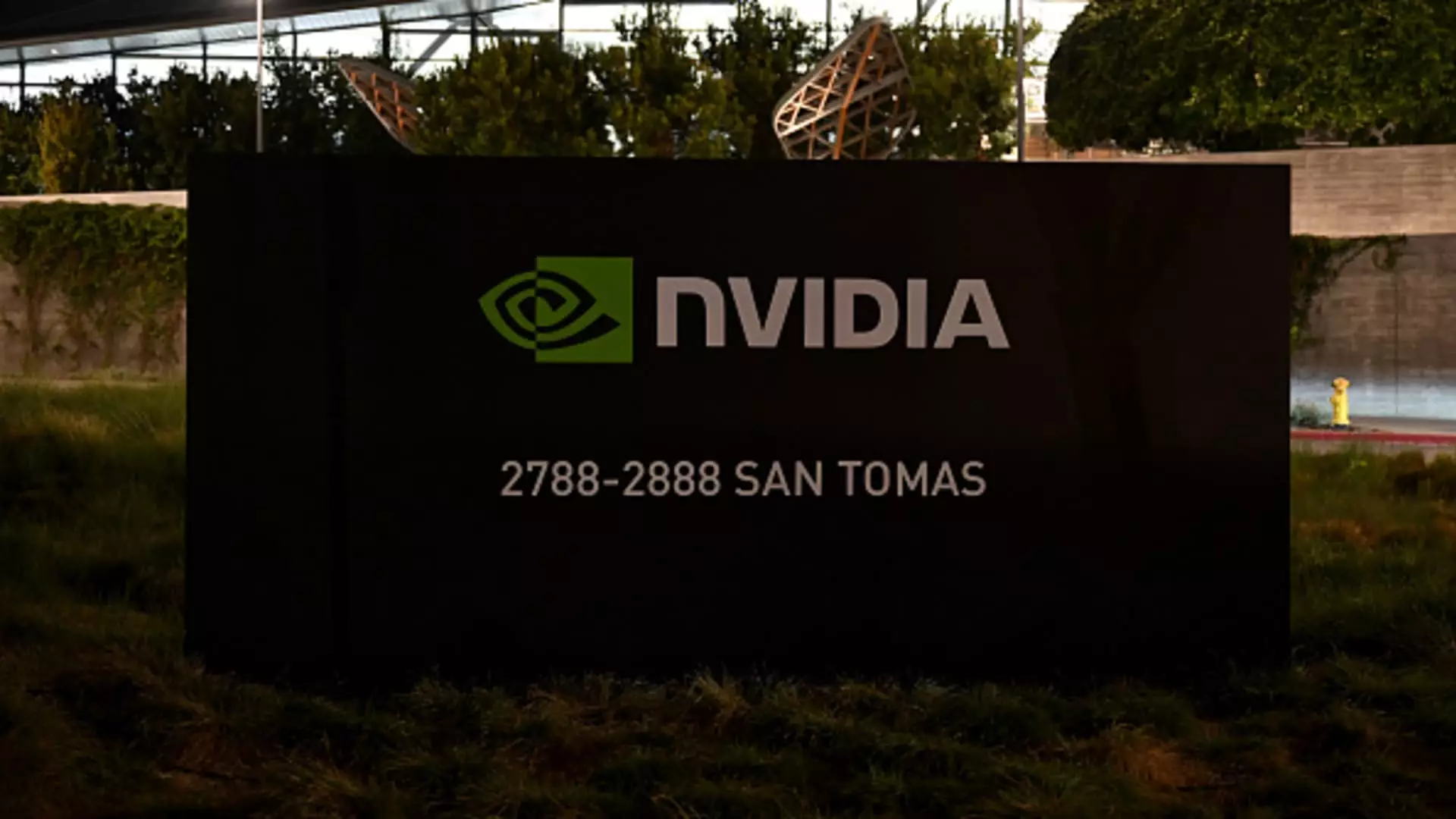The world of artificial intelligence (AI) has been marked by both incredible innovation and significant volatility, reflecting the industry’s dynamic nature. Recently, Nvidia’s CEO Jensen Huang delivered comments that reignited enthusiasm among investors, highlighting a resurgence in interest toward AI and tech stocks. Huang’s assertion that generative AI represents not merely a tool but an industry cornerstone has set a hopeful tone, prompting an exploration of the potential avenues for investment in this transformative field.
At the Goldman Sachs Communacopia + Technology Conference, Huang articulated a forward-looking perspective on AI and its implications for data centers and the tech industry at large. He revealed an optimistic outlook on data centers, envisioning them as harboring a potential worth $1 trillion—a figure that underscores the tremendous growth prospects linked to generative AI. Huang’s remarks prompted Nvidia shares to surge more than 8%, alleviating some concerns regarding the slower-than-anticipated returns from previous AI investments. His statements did not just ignite a spark in Nvidia’s stock; they also acted as a catalyst for a broader rally among key players in the semiconductor sector, where companies like Advanced Micro Devices (AMD) and Broadcom witnessed their shares rise significantly amidst renewed investor confidence.
Market analysts, including John Belton from Gabelli Funds, acknowledge the underlying optimism Huang’s statements inspire, particularly regarding the consistent demand projected for the coming years. Belton emphasized the importance of scaling production capacities in tandem with evolving demands, particularly via partnerships with key manufacturers like Taiwan Semiconductor Manufacturing Company (TSMC). This full-circle collaboration underscores the intricacies of modern supply chains that support the burgeoning AI sector.
Equally significant is the perspective offered by Angelo Zino of CFRA, who identifies hardware companies as short-term beneficiaries of the ongoing AI-driven build-out. The competition between AMD and Nvidia in GPU production exemplifies this trend, as firms like Marvell Technology position themselves as essential enablers for companies like Meta Platforms to innovate in custom silicon development. Additionally, Micron Technology stands poised to capitalize on the surging demand for memory—a foundational element of advanced AI functionalities.
While the excitement surrounding AI technologies is palpable, it is essential to approach investments with a discerning eye. The introduction of Apple’s iPhone 16, featuring new AI capabilities dubbed Apple Intelligence, reflects an industry pivot toward integrating AI seamlessly into consumer technologies. However, Wall Street’s lukewarm reception to Apple’s updates suggests that not all innovations will resonate equally with consumers. Zino remains optimistic about Apple’s potential as a leader in AI device technology, especially as consumer engagement with products like the Vision Pro headset grows.
The implications of AI’s rise extend beyond hardware. With infrastructure and equipment companies like Applied Materials also in the mix, the competition in this sector is expected to amplify. According to Belton, these firms could emerge as long-term winners as the ecosystem matures. However, there remains a cautious sentiment regarding the proliferation of companies jumping into the AI trend, leading to fears reminiscent of the dotcom bubble of the early 2000s. Concerns articulated by Mark Malek, chief investment officer at SiebertNXT, highlight the necessity for investors to recognize the distinction between viable long-term players and potential market excesses.
The landscape of AI investment continues to evolve, with technology giants like Microsoft, Alphabet, and Amazon capitalizing on the AI wave. Their substantial influence validates the importance of established players in harnessing AI capabilities, yet Malek sheds light on a critical aspect of the market: the private sector. Innovations emerging from private companies, often obscured from the public’s view, may drive significant advancements in AI far beyond current public offerings.
As investors navigate the complexities of the AI market, understanding both public and private developments will be paramount to making informed decisions. The landscape is dotted with opportunities, but prudence and continuous monitoring of trends are essential in this fast-paced, ever-evolving industry. Ultimately, the future of AI investments will depend on identifying sustainable growth potential, backed by reliable data and genuine innovation.


Leave a Reply